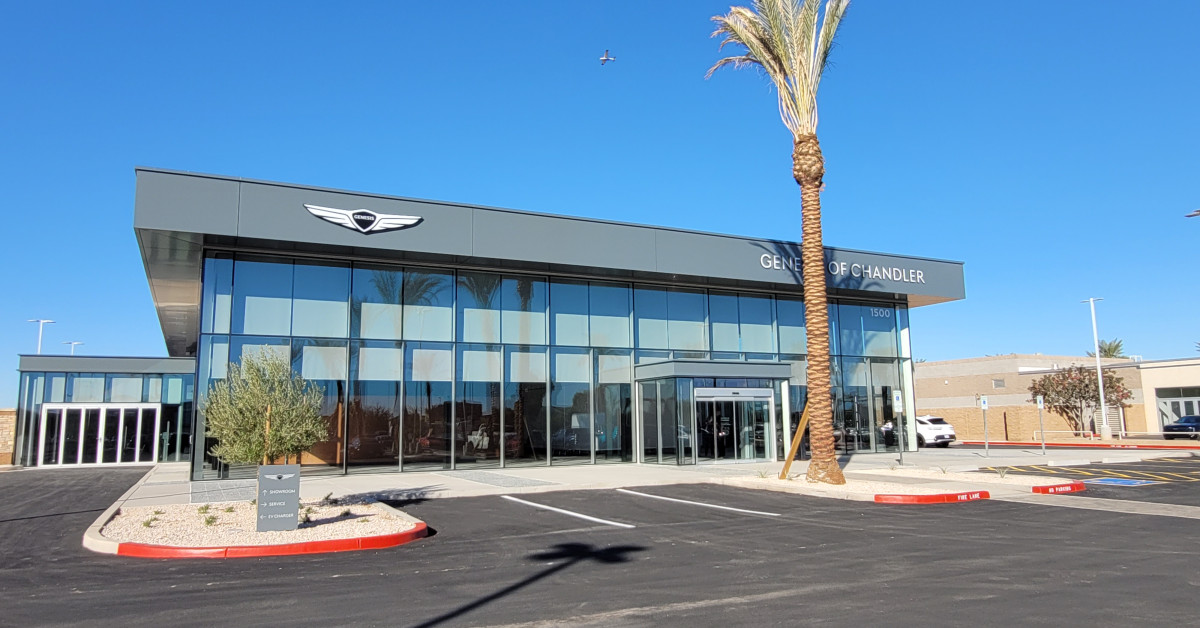- Get link
- X
- Other Apps
- Get link
- X
- Other Apps
The Rise of Independence: Exploring Standalone Luxury Vehicle Brands Under Certain Companies Usedtruck.Truckstrend.Com
Introduction: Defining Luxury on its Own Terms
The automotive landscape is a complex ecosystem of brands, models, and parent companies. While many luxury vehicles exist within the portfolios of mass-market automakers, a select few operate as standalone luxury brands, often under the umbrella of larger corporations but maintaining distinct identities, engineering philosophies, and target audiences. These "Standalone Luxury Vehicle Under Certain Companies" represent a unique approach to crafting prestige and exclusivity, allowing them to focus entirely on the nuances of high-end automotive experiences. This article delves into the world of these independent luxury entities, exploring their benefits, challenges, the strategies they employ, and examples of companies that have successfully (or unsuccessfully) navigated this path. Understanding this model is crucial for comprehending the dynamics of the luxury car market and appreciating the distinct character of brands that prioritize opulence above all else.
The Rise of Independence: Exploring Standalone Luxury Vehicle Brands Under Certain Companies
Section 1: The Allure of Independence: Benefits of the Standalone Model
The primary driver behind creating or maintaining a standalone luxury brand, even under corporate ownership, is the perception of uncompromised quality and exclusivity. Here are key benefits:
- Unfettered Focus on Luxury: A standalone brand is not bound by the constraints of catering to a broader market. Its sole purpose is to create vehicles that embody luxury in every aspect – design, materials, performance, and technology. This concentrated effort allows for a higher level of craftsmanship and attention to detail.
- Brand Identity and Heritage: Independence allows for the cultivation of a unique brand identity, often rooted in heritage and tradition. This distinct identity resonates with affluent customers who value prestige and exclusivity. Think of the handcrafted legacy of Rolls-Royce or the technological prowess of Tesla.
- Premium Customer Experience: Standalone luxury brands can invest heavily in providing an exceptional customer experience, from personalized sales processes to exclusive after-sales services. This fosters brand loyalty and reinforces the perception of value.
- Innovation and Technological Leadership: Freed from the budgetary constraints of mass-market brands, standalone luxury automakers can prioritize innovation and technological advancements, often introducing cutting-edge features and technologies that eventually trickle down to more affordable vehicles.
- Higher Profit Margins: While volume is lower, the higher prices commanded by luxury vehicles translate to significantly larger profit margins per unit. This allows for reinvestment in research, development, and further enhancement of the brand.

Section 2: Navigating the Corporate Structure: The "Under Certain Companies" Factor
While these brands operate independently, they are often subsidiaries of larger automotive groups. This relationship presents both opportunities and challenges:
- Access to Resources and Technology: Being part of a larger corporation provides access to valuable resources, including research and development capabilities, manufacturing expertise, and global distribution networks. This can significantly reduce costs and accelerate development cycles.
- Financial Stability and Investment: The parent company provides a financial safety net, ensuring the standalone brand can weather economic downturns and invest in long-term projects without jeopardizing its survival.
- Potential for Synergies: Certain technologies and components can be shared between the parent company and the luxury brand, reducing costs and streamlining production.
- Risk of Dilution: The biggest challenge is maintaining the brand's distinct identity and preventing the parent company from imposing its values or compromising the quality of its products in the pursuit of cost-cutting measures. This requires careful management and a clear understanding of the brand's core values.
- Conflicting Priorities: The parent company's focus on volume and market share may clash with the standalone brand's emphasis on exclusivity and profit margins. Balancing these conflicting priorities is crucial for the success of the independent entity.


Section 3: Strategies for Success: Maintaining Independence and Exclusivity
Standalone luxury brands employ various strategies to maintain their independence and reinforce their exclusivity:
- Distinct Design Language: A unique and recognizable design language is essential for differentiating the brand from its parent company and competitors. This includes distinctive styling cues, signature features, and a consistent aesthetic across the model range.
- Handcrafted Quality and Attention to Detail: Emphasis on handcrafted quality and meticulous attention to detail is a hallmark of luxury vehicles. This includes using premium materials, employing skilled artisans, and rigorously testing every aspect of the vehicle.
- Limited Production Runs: Limiting production volume enhances exclusivity and creates a sense of scarcity, which further elevates the brand's desirability.
- Bespoke Customization Options: Offering extensive customization options allows customers to personalize their vehicles to their exact specifications, creating a truly unique and bespoke experience.
- Exclusive Marketing and Branding: Standalone luxury brands often employ targeted marketing campaigns that emphasize their heritage, craftsmanship, and exclusivity, appealing to affluent consumers who value prestige and individuality.
Section 4: Case Studies: Successes and Failures
Several companies have successfully navigated the challenge of maintaining a standalone luxury brand within a larger corporate structure. Others have struggled.
- Rolls-Royce (BMW Group): BMW's acquisition of Rolls-Royce in 1998 is a prime example of successful integration. BMW has invested heavily in Rolls-Royce, preserving its handcrafted tradition while introducing modern technology and engineering. The result is a brand that remains the pinnacle of automotive luxury.
- Bentley (Volkswagen Group): Similar to Rolls-Royce, Bentley has thrived under Volkswagen's ownership. VW has provided the resources and expertise necessary to modernize Bentley's production processes while preserving its British heritage and craftsmanship.
- Genesis (Hyundai Motor Group): Hyundai's creation of Genesis as a standalone luxury brand is a more recent example. Genesis aims to compete with established luxury brands by offering compelling design, advanced technology, and a premium ownership experience. It is still relatively new, but has gained a significant market share in the past years.
- Aston Martin (Various Ownership): Aston Martin's history is a testament to the challenges of maintaining independence. Despite producing iconic sports cars, Aston Martin has struggled financially and has been passed through numerous owners. This highlights the importance of stable financial backing and strategic management.
Section 5: Potential Challenges and Solutions
Standalone luxury brands face several challenges:
- Maintaining Brand Identity: As previously mentioned, the biggest challenge is preserving the brand's distinct identity and preventing it from being diluted by the parent company. Solution: Establish a clear brand charter that outlines the brand's core values and guiding principles.
- Cost Management: Luxury vehicles are expensive to develop and manufacture. Solution: Leverage shared resources and technologies from the parent company without compromising quality.
- Competition: The luxury car market is highly competitive. Solution: Focus on differentiation through design, technology, and customer experience.
- Changing Consumer Preferences: The tastes and preferences of luxury car buyers are constantly evolving. Solution: Stay ahead of the curve by anticipating future trends and adapting the brand's offerings accordingly.
- Sustainability: Consumers are becoming more environmentally conscious. Solution: Invest in sustainable technologies and practices, such as electric powertrains and eco-friendly materials.
Section 6: Future Trends: The Electric Revolution and Beyond
The automotive industry is undergoing a period of unprecedented transformation, driven by the rise of electric vehicles, autonomous driving, and connected car technologies. These trends present both challenges and opportunities for standalone luxury brands.
- Electric Vehicles: The transition to electric powertrains offers an opportunity to redefine luxury performance and create a new generation of high-end EVs.
- Autonomous Driving: Autonomous driving technologies have the potential to transform the driving experience, creating more relaxed and comfortable journeys.
- Connected Car Technologies: Connected car technologies offer new ways to enhance the ownership experience, providing personalized services and seamless integration with the digital world.
Conclusion: The Enduring Appeal of Exclusivity
Standalone luxury vehicle brands represent the pinnacle of automotive achievement, embodying craftsmanship, innovation, and exclusivity. While the challenges of maintaining independence within a larger corporate structure are significant, the rewards are equally compelling. By focusing on their core values, embracing innovation, and providing an exceptional customer experience, these brands can continue to thrive in an increasingly competitive and rapidly evolving market. The allure of exclusivity and the pursuit of automotive perfection will continue to drive the success of these independent luxury entities for years to come.
Table Price:
| Brand | Model | Starting Price (USD) | Engine Type | Notable Features | Parent Company |
|---|---|---|---|---|---|
| Rolls-Royce | Phantom | $460,000 | 6.75L Twin-Turbo V12 | Bespoke interior, starlight headliner, self-righting wheel centers | BMW Group |
| Bentley | Continental GT | $225,000 | 4.0L Twin-Turbo V8, 6.0L W12 | Rotating display, hand-stitched leather, advanced driver-assistance systems | Volkswagen Group |
| Genesis | G90 | $88,000 | 3.5L Twin-Turbo V6 | Rear seat entertainment, advanced safety features, premium Nappa leather | Hyundai Motor Group |
| Lucid | Air Grand Touring | $109,000 | Dual Electric Motors | Over 500 miles of range, luxurious interior, advanced driver-assistance systems | Lucid Group |
| Land Rover | Range Rover | $107,000 | Various (Gas, Hybrid, Electric) | Off-road capabilities, luxurious interior, advanced technology | Tata Motors |
Frequently Asked Questions (FAQ)
Q: What defines a standalone luxury vehicle brand?
A: A standalone luxury vehicle brand is one that operates independently, even under the ownership of a larger corporation. It has a distinct brand identity, design language, and target audience, and focuses exclusively on producing high-end vehicles.
Q: What are the benefits of owning a standalone luxury car?
A: Benefits include prestige, exclusivity, superior craftsmanship, advanced technology, and a personalized ownership experience.
Q: Are standalone luxury brands more expensive to maintain?
A: Generally, yes. Parts, service, and insurance tend to be more expensive due to the premium nature of the vehicles and the specialized expertise required for maintenance.
Q: How do these brands balance independence with corporate ownership?
A: Through clear brand charters, independent management teams, and a commitment to preserving the brand's core values.
Q: What is the future of standalone luxury brands in the age of electric vehicles?
A: The future is bright. The transition to electric vehicles presents an opportunity to redefine luxury performance and create new and innovative high-end EVs. Many standalone luxury brands are investing heavily in electric vehicle technology.
- Get link
- X
- Other Apps
Comments
Post a Comment